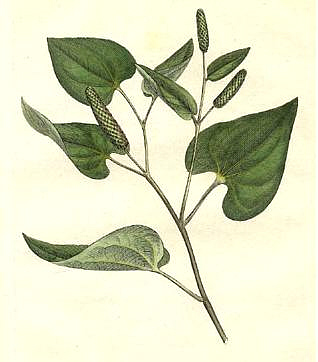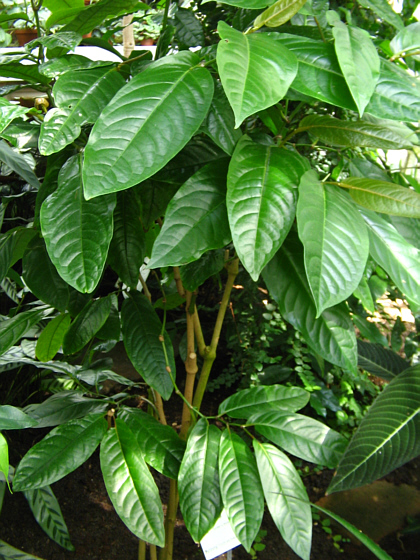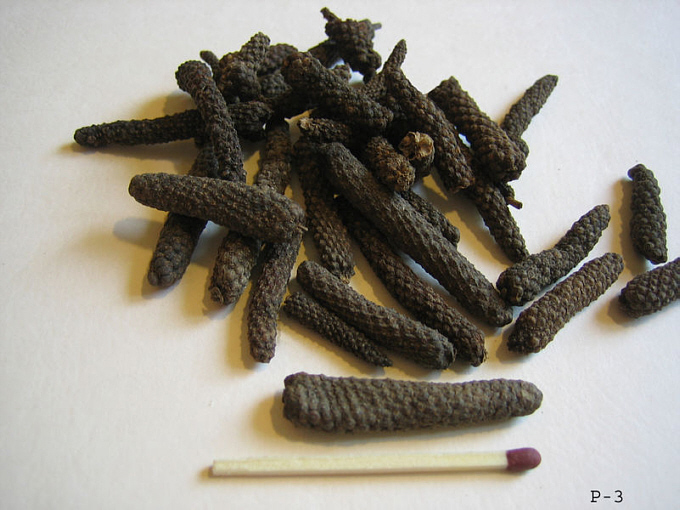

Zitierweise / cite as:
Carakasaṃhitā: Ausgewählte Texte aus der Carakasaṃhitā / übersetzt und erläutert von Alois Payer <1944 - >. -- Anhang A: Pflanzenbeschreibungen. -- Piper longum L. -- Fassung vom 2007-07-09. -- URL: http://www.payer.de/ayurveda/pflanzen/piper_longum.htm
Erstmals publiziert: 2007-07-09
Überarbeitungen:
Anlass: Lehrveranstaltung SS 2007
©opyright: Dieser Text steht der Allgemeinheit zur Verfügung. Eine Verwertung in Publikationen, die über übliche Zitate hinausgeht, bedarf der ausdrücklichen Genehmigung des Verfassers
Dieser Text ist Teil der Abteilung Sanskrit von Tüpfli's Global Village Library
WARNUNG: dies ist der Versuch einer
Übersetzung und Interpretation eines altindischen Textes. Es ist keine
medizinische Anleitung. Vor dem Gebrauch aller hier genannten Heilmittel wird
darum ausdrücklich gewarnt. Nur ein erfahrener, gut ausgebildeter ayurvedischer
Arzt kann Verschreibungen und Behandlungen machen!
Falls Sie die diakritischen Zeichen nicht dargestellt bekommen, installieren Sie eine Schrift mit Diakritika wie z.B. Tahoma.
Verwendete und zitierte Werke siehe: http://www.payer.de/ayurveda/caraka0001.htm

Abb.: Piper longum L.
[Bildquelle: Wikipedia]

Abb.: Piper longum L.
[Bildquelle: Wikipedia]

Abb.: Früchte von Piper longum L.
[Bildquelle: Wikipedia]
Dutt:
"PIPER LONGUM, Linn. Syn. Chavica Roxburghii, Miq.
Sans, Pippali. Kanā, Krishnā.
Vern. Pipul, Beng. Pipal, Hind.
The dried catkins and the root of Piper longum are used in medicine. They are considered heating, stimulant, carminative, alterative, laxative and useful in cough, hoarseness, asthma, dyspepsia, paralysis, etc. Old long pepper is said to be more efficacious than the fresh article. In the form trikatu or the three acrids ( see Piper nigrum), it is much used as an aromatic adjunct in compound prescriptions. Powdered long pepper, administered with honey, is said to relieve cough, asthma, hoarseness, hiccup and sleeplessness. A mixture of long pepper, long pepper root, black pepper and ginger in equal parts, is prescribed by several writers as a useful combination for catarrh and hoarseness.
As an alterative tonic, long pepper is recommended for use in a peculiar manner. An infusion of three long peppers is to be taken with honey on the first day, then for ten successive days the dose is to be increased by three peppers every day, so that on the tenth day the patient will take thirty at one dose. Then the dose is to be gradually reduced by three daily and finally the medicine is to be omitted. Thus administered it is said to act as a valuable alterative tonic in paraplegia, chronic cough, enlargements of the spleen and other abdominal viscera, etc.
Long pepper and black pepper enter into the composition of several irritating snuffs. The following is an example. Take of black pepper, long pepper, seeds of Moringa pterygosperma (sveta maricha) and ginger equal parts ; powder the ingredients and rub them together with the juice of the root of Agati grandiflora (vaka). This preparation is used as a snuff in coma and drowsiness.
Ashtakatvara taila. Take of ginger and long pepper each sixteen tolas, mustard oil four seers, butter-milk thirty-two seers, curdled milk four seers and boil them together in the usual way. This oil is rubbed externally in sciatica and paraplegia."
[Quelle: Dutt, Uday Chand: The materia medica of the Hindus / Uday Chand Dutt. With a glossary of Indian plants by George King. -- 2. ed. with additions and alterations / by Binod Lall Sen & Ashutosh Sen. -- Calcutta, 1900. - XVIII, 356 S. -- S. 243f.]